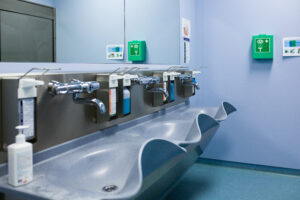Floating Clinics: How to Deliver Medical Care to Forgotten Communities
Projects aimed at reaching riverside regions are diverse and innovative, all sharing the same goal: to provide healthcare services to those who have been excluded.

In Latin America’s healthcare structure, there are areas that remain blank—places without any medical coverage. This often happens due to geographic isolation, and riverside communities are a clear example. These are settlements located along vast, winding rivers, where the distance to a hospital is measured not in kilometers but in hours or even days of navigation. In such regions, where ambulances cannot reach and the nearest health centers may be several days away, floating clinics have become a creative, compassionate, and efficient way to guarantee the right to health.
These vessels—ranging from boats and barges to catamarans and adapted rafts—carry doctors, nurses, medicines, vaccines, and medical equipment to communities that live virtually cut off from large cities. Typically, both the vessels and the logistics behind these operations are driven by foundations, private companies, and civil organizations. Their projects are transforming the way primary healthcare is delivered in remote contexts, proving that even the most inaccessible places deserve medical attention.
Bringing Healthcare to Excluded Areas
Floating clinics have gained strength and visibility over the past two decades, particularly for their impact in remote regions of the Amazon and along the Atlantic coast. Over time, their reach has expanded to other less-known territories as well.
Each vessel is designed like a miniature clinic, equipped with a consultation room, a procedure area, a small pharmacy, and often a compact laboratory. Some are fitted with operating rooms for minor surgeries and solar-powered systems to keep vaccines refrigerated. Routes are carefully planned, taking into account seasonal river levels, and teams work hand in hand with community leaders to ensure the delivery of medical supplies at every stop.
Success stories span a wide range of countries. In Peru, the organization Navegando por la Vida (“Sailing for Life”) has operated since 2014 with two hospital boats that navigate Amazonian communities unreachable by land. Each mission is staffed by doctors, nurses, and volunteers who spend weeks onboard providing general consultations, vaccinations, dental care, and prenatal checkups.
These initiatives are typically sustained through public–private partnerships and donations. In Brazil, the Barco Sanitario Abaré (“Abaré Health Boat”), operated by the organization Saúde e Alegria with support from Petrobras and the Banco do Brasil Foundation, stands as one of the most emblematic examples. Launched in 2006, it has provided medical services to more than 35,000 people along the Tapajós River in the Amazon. Its success became a model replicated by other programs in several Brazilian states, proving that cross-sector collaboration can yield tangible results.
In Colombia, the Luis Ángel Arango Floating Hospital, created by the Fundación Grupo Aval, sails the Magdalena and Orinoco rivers with a multidisciplinary team of healthcare professionals. In addition to medical consultations, these projects promote community engagement through preventive workshops and vaccination campaigns organized by the onboard staff.
In Argentina, similar transformative initiatives have emerged in the wetlands of the Paraná River. The Consultorio Flotante Alma (“Alma Floating Clinic”), founded by volunteer doctors and supported by private donors, provides pediatric care, prenatal checkups, and vaccination programs to island schools. The project is sustained through contributions from local businesses, healthcare institutions, and citizens who donate supplies or fuel.
Beyond providing access to medical services, floating clinics have evolved into spaces for education and community connection. They offer not only treatment but also information on hygiene, nutrition, and prevention of endemic diseases. The medical teams often serve as both healthcare providers and community educators, leading workshops on healthy habits, sexual health, and safe water consumption. In some cases, foundations use these visits to distribute water filters or install rainwater collection systems.
Technology has also become an integral part of these missions. Telemedicine allows onboard professionals to connect via satellite with urban specialists for complex cases, enabling real-time collaboration. Pharmaceutical laboratories and tech companies have donated moisture-resistant medical kits, solar batteries, and portable diagnostic systems, while universities contribute through research on rural health and tropical diseases.
Floating clinics stand as powerful proof that goals can be achieved when teamwork exists—because the right to receive medical care should not depend on geography, but on the presence of human need.


